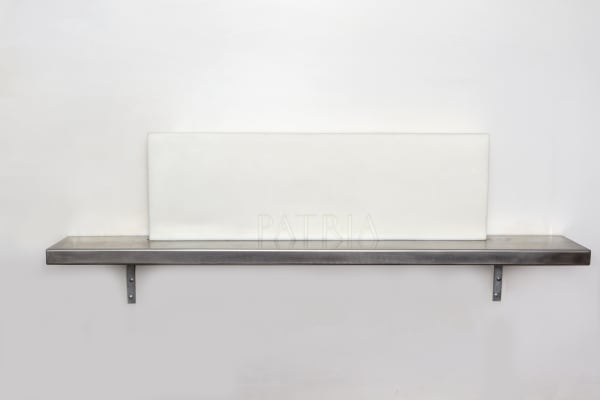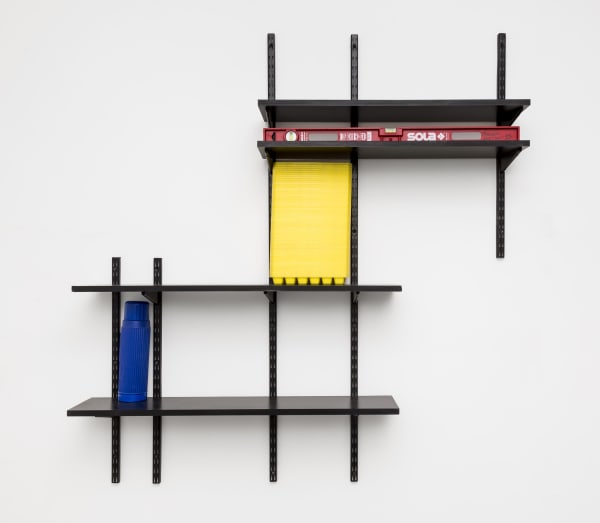Luis Benedit
Buenos Aires, Argentina, 1937 - 2011
F. Benedit's work weaves a discourse that has both historical memory and artistic memory as its core. As an architect and designer, but an artist as well, he forms his sensibility in the heat of informalism and pictorial neo-figuration, while also drinking from pop imagery. However, his work will find its starting point at the crossroads of a set of lines of work developed from his interest in the relationship between life and environment, between behavior and its conditioning factors. Very early in his work from the late '60s, the artist adopts a set of formal problems affected by the scientific culture, typical of the systems art and conceptual art of the time. As an etiologist, as a biologist, and as a poultry farmer, he arranges labyrinths for mice, hydroponic crops, honeycombs, and artificial flowers. With his experiments, he is concerned with distilling ways of exposing information and communicating processes; he acquires strategies to formulate questions and establish that the comprehension of the idea that art and research mutually feed each other is on the horizon.
Later, he takes this concern to national history, starting with the rural world. Along with a visual recovery of the universe of the "inland" (ranging from the Pampean to the Patagonian), through watercolors and drawings, Benedit creates an inventory of tools common to the countryside. He arranges and exhibits a set of objects (tabas, knives, corncobs, castration, and tasseling instruments) in wooden boxes that, detached from their ordinary applications, form part of a distinctive installation discourse that highlights the artist as an observer committed to extracting conceptual operations from his objects. The interplay between historical memory and artistic memory, thus, becomes his trademark.
His work focuses on the areas of constitution of national identity, and its iconography revisits tragic figures of the 1930s, such as Horacio Quiroga, Leopoldo Lugones, and Lisandro de la Torre, and also explores the most widespread imaginations of the Conquest, in which the paradisiacal visions of El Dorado are intertwined with the extermination of the native populations of America. At the same time, he works with the visual world of, the popular illustrator, Florencio Molina Campos; the costumbrista, Jean León Palliére, and Hipólito Bode, among others, mixing high art with popular art. His archaeological work, without the vindictive tones of the nostalgic utopian or the critical and distanced gaze of the cosmopolitan artist, articulates, on the contrary, questions about the narratives of what is ours, from "foreign" perspectives. The result of this exploration will be to invent ways of seeing what is familiar, from the eyes of those who see it for the first time.
-

LUIS BENEDIT y FELICIANO CENTURIÓN en el MUSEO DE ARTE MODERNO DE BUENOS AIRES
Préstamos Balanz July 6, 2023El jueves 6 de julio se inaugura en el Museo de Arte Moderno de Buenos Aires la muestra “Manifiesto verde. Imaginarios pictóricos para un mundo...Read more -

Luis F. Benedit
Artistas de la colección August 2, 2021Créditos: Nevada CineRead more
-

The Argentina we carry inside
By Juliana Fontalva December 20, 2022A few days ago, the coach of the French national team, Dider Deschamps, gave a press conference in Qatar ahead of the final match. As...Read more -

I would never be friends with a bad artist
By Fernando Farina February 15, 2022I would never be friends with a bad artist A story should have a beginning, a middle, and an end, but not necessarily in that...Read more -

The past recalled
By Rodrigo Alonso February 4, 2022As we know, contemporary art does not follow specific construction rules, nor does it ascribe to precise disciplines or materialities. As a phenomenon that embodies...Read more







